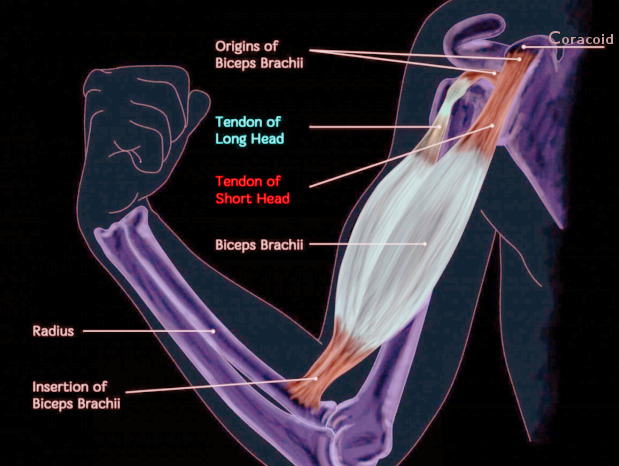Proximal (Long Head) Biceps Repair
The proximal biceps tendon (or long head of the biceps), is located at the top of the biceps muscle, close to the shoulder. A tear in this region of the biceps is often less problematic, than that of a tear at the elbow (distal biceps tendon tear).
The main sign of a tear in the long head of biceps tendon, is usually pain in the shoulder and upper arm and a visible bunching of the muscle or a “Popeye” sign. It is rare that there are other signs or symptoms associated with the tear.
The initial pain may improve and usually, a proximal biceps tear does not result in any long-term change in arm strength but can cause earlier fatigue or cramping in the muscle.
Surgery may be required to aid in pain reduction or if significant fatigue or cramping occurs. Also, a tear in the proximal biceps tendon is often present in conjunction with other injuries in the shoulder. Therefore, surgery can be performed to fix accompanying problems in the same surgical procedure.
Non-surgical options may be considered by Mr. Chua if the patient is managing well and with little or no functional problem . These recommendations may include physiotherapy or steroid injections.

Copyright © 2020, StatPearls Publishing LLC. Link to Image License: https://creativecommons.org/licenses/by/4.0/
Surgery
Dr. Chua will assess the best method for performing your surgery, depending on the nature of the injury.
The common approaches for a proximal (long head) biceps repair surgery include a biceps tenotomy and a biceps tenodesis. A biceps tenotomy involves cutting the proximal (long head) biceps at its starting point, making it retract from the shoulder joint. In a biceps tenodesis procedure, the proximal biceps is cut at its starting point, or the end of the tendon is found if already ruptured, and then it is reattached to the humerus bone lower down. These surgeries may be performed as keyhole surgeries or with a small incision.
After Surgery
The surgery can be performed as a day procedure, or the patient may be required to stay overnight, depending on Mr. Chua’s assessment. As mentioned above, proximal (long head) biceps repair procedures are often performed in conjunction with other repairing surgeries for rotator cuff repair or subacromial bursitis decompression. Depending on the type of surgery that Mr. Chua performs, the arm may need to be immobilised for 4 weeks in a sling or brace. The arm should not be used for strenuous activity for at least 12 weeks.
It is crucial that you follow the advice given to you by Mr. Chua, in order for the arm to heal properly, and retain full function.
Rehabilitation
Mr. Chua will advise you in regards to the introduction of resistance exercises, within your rehabilitation plan. The plan will involve a slow introduction of movement to the arm, and physiotherapy may be prescribed.

